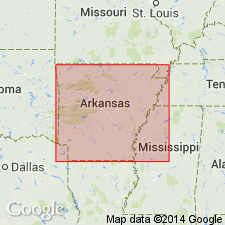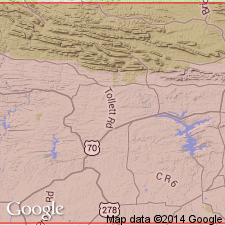
- Usage in publication:
-
- Fork Mountain slate
- Modifications:
-
- Original reference
- Dominant lithology:
-
- Slate
- Quartzite
- AAPG geologic province:
-
- Ouachita folded belt
Summary:
Pg. 30, 40 and 1914 (USGS Bull. 586). Fork Mountain slate. Gray to greenish and chocolate-colored slates, containing thin layers of quartzite in lower part; much jointed, but withstands weathering, and usually forms a bluff where it outcrops on mountain side. Overlies Arkansas novaculite and unconformably underlies Stanley shale. [Age is Pennsylvanian.]
[Named from Fork Mountain, Polk Co., southwestern AR.]
Source: US geologic names lexicon (USGS Bull. 896, p. 753).

- Usage in publication:
-
- Fork Mountain slate
- Modifications:
-
- Abandoned
- AAPG geologic province:
-
- Ouachita folded belt
Summary:
Pg. 66. Some shale at base of Stanley shale has in places been altered to slate, to which the name "Fork Mountain slate" has been earlier applied. [This name has been discarded. The beds are only a local facies of Stanley shale.]
Source: US geologic names lexicon (USGS Bull. 896, p. 753).
For more information, please contact Nancy Stamm, Geologic Names Committee Secretary.
Asterisk (*) indicates published by U.S. Geological Survey authors.
"No current usage" (†) implies that a name has been abandoned or has fallen into disuse. Former usage and, if known, replacement name given in parentheses ( ).
Slash (/) indicates name conflicts with nomenclatural guidelines (CSN, 1933; ACSN, 1961, 1970; NACSN, 1983, 2005, 2021). May be explained within brackets ([ ]).

